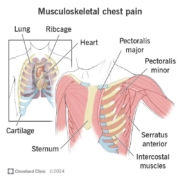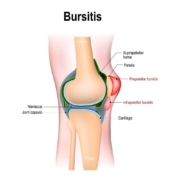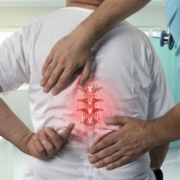5 Essential Tips to Prevent Carpal Tunnel Syndrome Today
In today’s fast-paced, tech-driven world, our hands are more active than ever. Whether you’re typing away at a keyboard, scrolling through your smartphone, or engaging in hobbies that require repetitive hand movements, the risk of developing Carpal Tunnel Syndrome looms large. This condition, characterized by pain, numbness, and tingling in the hand and wrist, can significantly impact your daily life and productivity. But fear not! By implementing a few simple strategies, you can safeguard your wrists and maintain your hand health. In this listicle, we’ll explore 5 essential tips to prevent Carpal Tunnel Syndrome today. From ergonomic adjustments to mindful habits,you’ll discover practical advice that can help you keep discomfort at bay and enjoy a more pleasant,pain-free lifestyle.Let’s dive in!
1) Maintain Proper Ergonomics: Adjust your workstation to ensure that your keyboard and mouse are at the right height, allowing your wrists to remain straight and your hands slightly elevated.Consider using ergonomic tools like wrist rests and chairs that support good posture to minimize strain
Creating a workspace that promotes comfort and efficiency is crucial in preventing carpal tunnel syndrome. Start by ensuring that your keyboard and mouse are positioned at a height that allows your wrists to remain in a neutral position—this means they should not be bent up or down. Ideally, your elbows should be at a 90-degree angle, and your forearms should be parallel to the floor. If your desk is too high or too low, consider using an adjustable chair or a keyboard tray to achieve the perfect alignment. Remember, the goal is to keep your wrists straight and your hands slightly elevated to minimize unnecessary strain.
Incorporating ergonomic tools into your workstation can further enhance your comfort. Here are some options to consider:
- Wrist Rests: These provide cushioning and support, helping to keep your wrists in a neutral position.
- Ergonomic Chairs: Look for chairs that offer lumbar support and adjustable features to maintain good posture.
- Adjustable Monitor Stands: position your screen at eye level to prevent neck strain and encourage a more relaxed posture.
By investing in these ergonomic solutions, you can create a workspace that not only enhances productivity but also significantly reduces the risk of developing carpal tunnel syndrome.
2) Take Frequent Breaks: Incorporate short breaks into your daily routine to give your hands and wrists a chance to rest. Even a few minutes every hour can significantly reduce tension and fatigue, helping to prevent the onset of carpal tunnel syndrome
Incorporating short breaks into your daily routine is crucial for maintaining hand and wrist health, especially if you spend long hours typing or performing repetitive tasks. By stepping away from your work for just a few minutes every hour, you can significantly reduce tension and fatigue in your hands. Consider setting a timer to remind yourself to take these breaks; it can be as simple as stretching your fingers,shaking out your hands,or even doing a quick walk around your workspace. This small adjustment can help rejuvenate your muscles and keep your blood circulating, ultimately lowering the risk of developing carpal tunnel syndrome.
During these breaks, try to engage in activities that promote relaxation and adaptability. Here are some effective ways to utilize your break time:
- Hand Stretches: Gently stretch your fingers and wrists to relieve tightness.
- Wrist Rotations: Rotate your wrists in both directions to enhance mobility.
- Deep Breathing: Practice deep breathing exercises to reduce overall stress levels.
- Posture check: Use this time to assess and correct your posture at your workstation.
To further illustrate the benefits of taking breaks, consider the following table that compares productivity levels and discomfort ratings between continuous work and work with scheduled breaks:
| Work Style | Productivity Level | Discomfort Rating (1-10) |
|---|---|---|
| Continuous Work | 7/10 | 8/10 |
| Work with Breaks | 9/10 | 4/10 |
As shown, integrating breaks not only boosts your productivity but also significantly lowers discomfort levels. this simple yet powerful strategy can be the key to safeguarding your hands and wrists from the perils of overuse.
3) Stretch and Strengthen: Engage in hand and wrist exercises that promote flexibility and strength. Simple stretches, like wrist flexor and extensor stretches, can improve circulation and reduce stiffness, making your wrists more resilient to strain
Incorporating hand and wrist exercises into your daily routine can significantly enhance flexibility and strength, providing a solid defence against the onset of carpal tunnel syndrome. Simple stretches can be easily integrated into breaks throughout your day.Consider these effective exercises:
- Wrist Flexor Stretch: Extend one arm in front of you, palm facing up.With your other hand, gently pull back on your fingers to stretch the wrist flexors. Hold for 15-30 seconds.
- Wrist Extensor Stretch: Extend one arm in front of you, palm facing down. Use your other hand to gently push down on your fingers, stretching the wrist extensors. Hold for 15-30 seconds.
- Finger Stretch: Spread your fingers wide apart and hold for a few seconds, then relax. Repeat several times to improve circulation.
For a more structured approach, consider setting aside a few minutes each day for a dedicated stretching routine. Below is a simple table outlining a weekly stretching schedule:
| Day | Exercise | Duration |
|---|---|---|
| Monday | wrist Flexor Stretch | 3 sets of 30 seconds |
| Wednesday | Wrist Extensor Stretch | 3 sets of 30 seconds |
| Friday | Finger Stretch | 5 minutes |
By committing to these exercises, you’ll not only enhance the resilience of your wrists but also promote better overall hand health. Regular engagement in these simple yet effective stretches can help combat stiffness and improve your range of motion, making your wrists less vulnerable to strain.
4) Use Voice Recognition Software: Reduce the amount of typing you do by utilizing voice recognition technology. This can definately help alleviate the repetitive strain on your hands and wrists, allowing you to navigate your tasks more comfortably and efficiently
Incorporating voice recognition software into your daily routine can significantly reduce the strain on your hands and wrists. By simply speaking your thoughts, you can create documents, send emails, and even control your devices without the need for constant typing. This technology not only helps in alleviating discomfort but also enhances productivity, as you can dictate your ideas much faster than you can type them. Consider exploring various software options available, such as:
- Dragon NaturallySpeaking: Known for its accuracy and versatility.
- Google Docs Voice Typing: A free tool integrated into Google Docs for easy use.
- microsoft Dictate: A built-in feature in microsoft Office that allows seamless dictation.
- Otter.ai: Great for transcribing meetings and conversations in real-time.
To maximize the benefits of voice recognition, it’s essential to create a comfortable environment. Ensure that your microphone is of good quality and positioned correctly to capture your voice clearly. Additionally, take the time to train the software to recognize your voice and speech patterns, which will improve accuracy over time. Here’s a quick comparison of popular voice recognition tools to help you choose the best fit for your needs:
| Software | Platform | Key Features |
|---|---|---|
| Dragon NaturallySpeaking | Windows, Mac | High accuracy, customizable commands |
| Google Docs Voice Typing | Web-based | Free, easy collaboration |
| Microsoft Dictate | Windows, Mac | Integrated with Office, multi-language support |
| Otter.ai | Web, iOS, Android | Real-time transcription, speaker identification |
5) Be Mindful of Your Grip: Pay attention to how you hold your tools and devices. Whether you’re typing, using a mouse, or holding your phone, a lighter grip can lessen the pressure on your wrists. Opt for a relaxed hold to prevent unnecessary strain during extended use
When it comes to using tools and devices, the way you grip them can significantly impact the health of your wrists. A tight grip may seem instinctual, especially during tasks that require precision, but it can lead to unnecessary strain over time. Rather, aim for a lighter hold that allows your fingers to relax. This not only helps to alleviate pressure on your wrists but also promotes better blood circulation, which is crucial for long-term comfort and functionality. Consider these tips for adjusting your grip:
- Keep your fingers relaxed: Avoid clenching your hands around your devices.
- Use ergonomic tools: Opt for tools designed to fit comfortably in your hand.
- Take breaks: Regularly pause to stretch your fingers and wrists.
Additionally, being mindful of your grip extends beyond just typing or using a mouse. When holding your phone, for instance, try to support it with your palm rather than pinching it between your fingers. this simple adjustment can make a world of difference. Here’s a quick reference table to visualize the impact of grip styles:
| Grip Style | Effects |
|---|---|
| Tight Grip | Increased wrist strain, potential for discomfort |
| Relaxed Grip | Less pressure on wrists, improved comfort |
The Conclusion
As we wrap up our exploration of the five essential tips to prevent carpal Tunnel Syndrome, remember that taking proactive steps today can pave the way for a more comfortable tomorrow. Whether it’s adjusting your workspace, incorporating regular breaks, or practicing mindful hand exercises, each small change contributes to your overall well-being. Your hands are your tools for creativity and productivity—treat them with care. By implementing these strategies, you can safeguard against discomfort and ensure that you continue to enjoy the activities you love. So go ahead, take charge of your hand health, and give yourself the gift of pain-free living!









Leave a Reply
Want to join the discussion?Feel free to contribute!